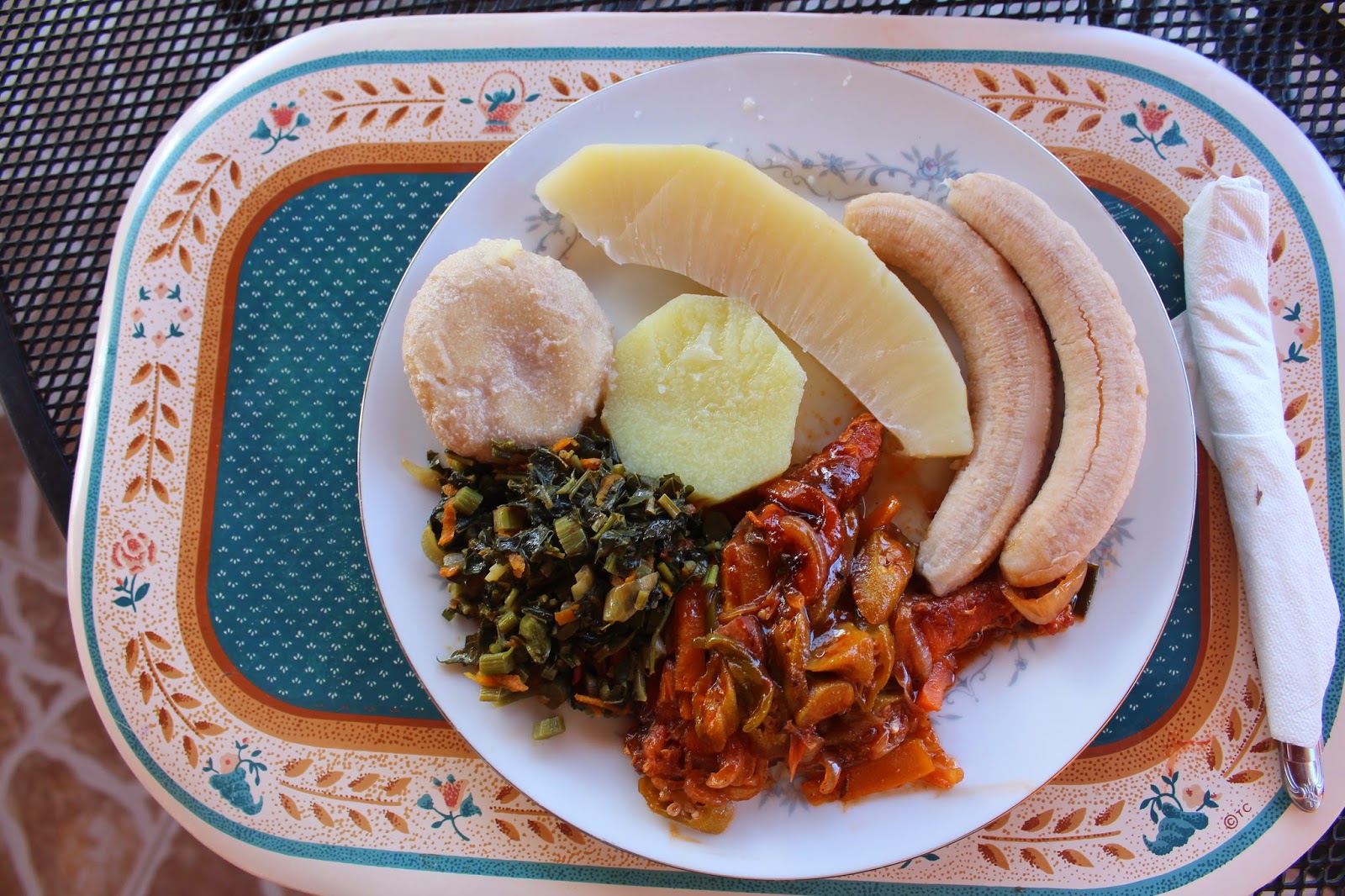There’s a lot more to Jamaican cuisine than just Jerk Chicken and Curry Goat.
Patties are also a very popular fast food in Jamaica.
They’re similar to meat turnovers, with many different fillings. One of the
most famous patty shops is called Juici.
Jamaicans like to cook with soup mixes. A very popular one
is called Cock Soup. No one in Jamaica seemed to find the name funny, but I
did. The slogan “A Me Dis,” is patois for “This is me.”
I like tropical fruits, so I was happy with the wide variety
available. I even found a favorite I discovered in Thailand called Jack Fruit, but it was expensive and hard to find.
It’s interesting how they sell motor oil at the fruit stand.
I like the star fruit and sour sop, fruits I know from Thailand, Mexico and
Dominican Republic. I bought a nice papaya to put in the blender with milk,
ice and a little sugar. Papaya milkshakes are so yummy, but the Jamaican family I was staying with had never tried them before.
The national fruit of Jamaica is called Ackee. It’s reputed
to have arrived from West Africa along with the slaves. Ackee grows in a tree
and looks like you could eat it raw, but don’t try. It’s much better cooked and
scrambled with dried codfish.
Here’s cooked Ackee served with boiled plantains, a popular
dish for breakfast.
Another favorite is coconut water, right out of the shell.
After drinking the juice, I always ask to have the coconut split open so I can
spoon out the coconut jelly, as the soft white coconut meat is called in
Jamaica.
Just in the last few years, Jamaican farmers have figured
out how to grow sorrel all year round. Sorrel is a type of hibiscus which is
called “jamaica” in Mexico and is used to make tea. The Jamaicans also make a
fermented drink from sorrel, mixed with ginger and rum.
Traveling around the island of Jamaica we got to try
different kinds of food. Here's the breakfast cook in the small coastal
town of Lucie, not far from Negril.
Breakfast was tasty and hearty, but a lot of different
kinds of starches: plantains,
Dumpling, yam, and breadfruit, with a delicious fish stew
and calaloo.
At a waterfront restaurant in Port
Morant.
We should have ordered only one fish dinner, but we had no
idea it was going to be so much food. So I ordered a mixed vegetable plate too,
only to discover that the fish dinner comes with mixed veggies also. Notice
the “Ting,” a Jamaican soda that many Jamaicans remember from childhood, which is
something like Sprite. The large dish of red beans and rice, which Jamaicans
call peas and rice, is served with almost every meal.
In Lucie I tried a peanut porridge which tasted way better
than it sounds or looks.
Needless to say, no one goes hungry in Jamaica.











.JPG)



















